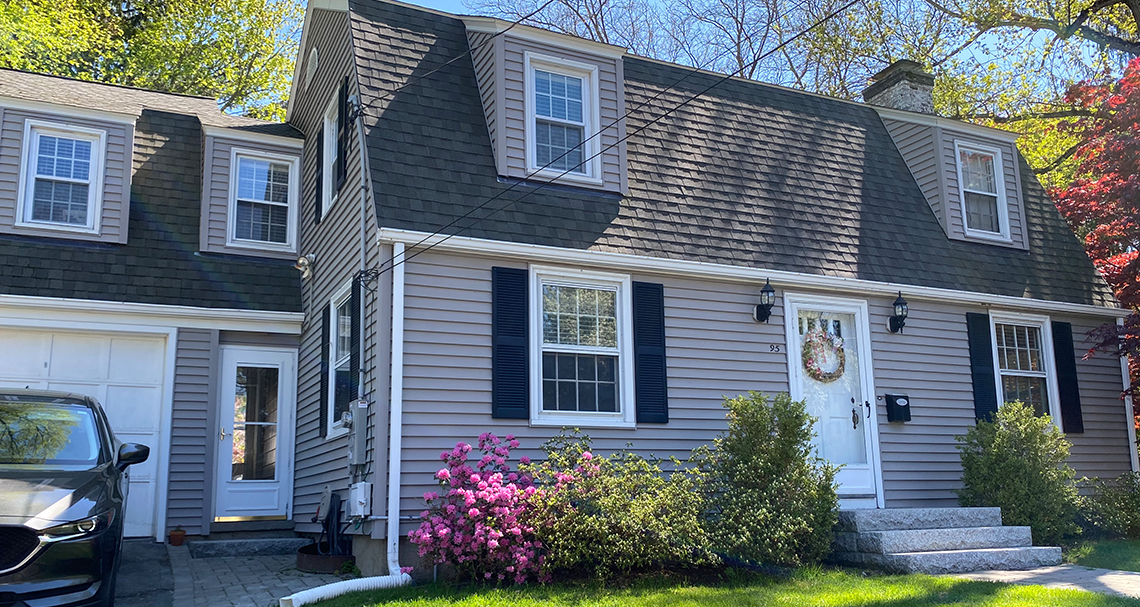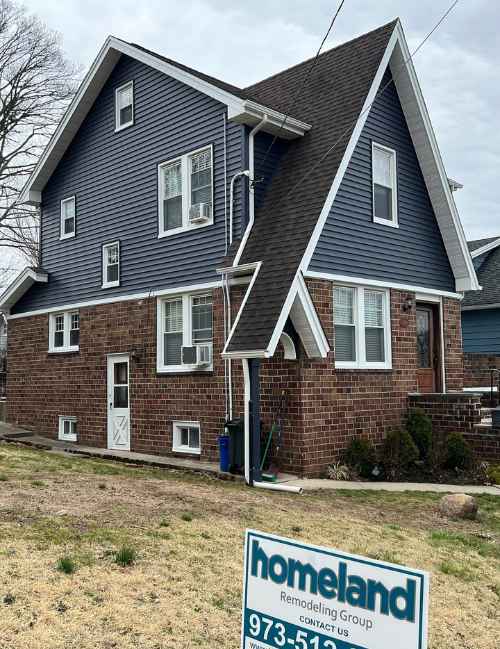Morris Siding Contractor with Exceptional Service and Top-Notch Materials
Morris Siding Contractor with Exceptional Service and Top-Notch Materials
Blog Article
The Vital Guide to the Various Sorts Of Siding and Their Special Benefits
In the world of home renovation, picking the right exterior siding is a crucial choice that influences both visual allure and functional performance. With so numerous options to think about, which exterior siding material truly stands out for your specific project?
Timber House Siding
Timber home siding, a prominent choice for household exteriors, supplies a classic visual that combines all-natural appeal with structural stability. This siding material is readily available in numerous designs, including clapboard, roof shingles, and board-and-batten, permitting home owners to tailor their appearance to match their style preferences. Timber home siding is typically crafted from durable types such as cedar, redwood, or yearn, which are known for their strength and capacity to hold up against ecological stressors.
Among the primary advantages of wood house siding is its superb insulation residential or commercial properties, which can add to power efficiency and reduced heating expenses. Furthermore, timber home siding is biodegradable, making it an eco friendly alternative when sourced sustainably. Routine maintenance, including paint or staining, can extend its lifespan and boost its appearance, allowing house owners to preserve the all-natural charm of the timber.
Nevertheless, potential disadvantages consist of vulnerability to parasites, rot, and weather damage, demanding appropriate therapy and upkeep - morris siding contractor. Despite these worries, when correctly looked after, timber exterior siding can supply a durable and stunning solution that enhances the character of a home while supplying a warm, inviting atmosphere

Vinyl Home Siding
Plastic siding has actually emerged as a leading selection for property owners looking for a low-maintenance outside choice that integrates sturdiness and affordability. This functional material is crafted from polyvinyl chloride (PVC), making it immune to different weather, including wetness and UV rays. Consequently, plastic siding does not warp, rot, or fade, making certain resilient visual charm.
Among the main advantages of plastic exterior siding is its extensive variety of colors and styles, enabling home owners to accomplish the wanted appearance for their building without the need for constant repainting. Furthermore, vinyl siding is simple to mount, which can dramatically decrease labor expenses during building or restoration projects.
Vinyl house siding also adds to power efficiency. Lots of options function insulation support, which boosts thermal efficiency, helping to maintain comfortable interior temperatures and potentially reducing power costs. In addition, its smooth surface area facilitates simple cleansing, calling for only periodic washing with a garden pipe to eliminate dirt and debris.
Fiber Cement House Siding
Fiber concrete siding has acquired traction among contractors and property owners alike due to its remarkable combination of durability and visual flexibility. Made up of a mix of cellulose, concrete, and sand fibers, this siding alternative is crafted to stand up to extreme weather condition problems, including high winds, hefty rainfall, and temperature changes, making it a lasting choice for property exteriors.

One of the additional hints main benefits of fiber concrete exterior siding is its resistance to pests, such as termites, and its non-combustible nature, offering boosted fire security. morris siding contractor. In addition, it is offered in a wide variety of styles, appearances, and colors, enabling home owners to accomplish their desired aesthetic without giving up performance
One more benefit is its low upkeep demands; fiber concrete exterior siding commonly requires painting or staining every 5-10 years, which is much less constant than various other materials. Its long life adds to a lower total cost of ownership, as it minimizes the demand for constant repair work or replacements.
Eventually, fiber concrete house siding represents an excellent investment for those seeking a resilient, attractive, and versatile exterior choice, integrating both type and function to enhance the home's curb allure.
Steel House Siding
The attraction of steel house siding hinges on its durable durability and contemporary visual charm, making it a preferred option for contemporary architecture. Available in materials such as aluminum and steel, metal siding offers a range of finishes and shades, enabling house owners to accomplish an individualized look that complements their layout vision.

Energy efficiency is another substantial benefit, as many steel siding products are designed with insulation Visit Your URL choices that aid manage interior temperature levels. This can bring about lowered power prices with time. Additionally, metal siding is typically recyclable, making it an eco-friendly option for sustainability-minded property owners.
The setup process for metal exterior siding can be relatively straightforward, resulting in a quicker turn-around time for building and construction jobs. Generally, steel home siding integrates performance and style, making it a practical alternative for those looking for a enduring and visually enticing outside surface.
Block and Rock Exterior Siding
Block and rock home siding stands apart as a timeless selection that improves the aesthetic beauty of any type of home. Understood for their sturdiness and low upkeep, these materials provide a remarkable roi while boosting the residential or commercial property's curb allure. Offered in numerous colors, textures, and patterns, brick and stone can be tailored to fit diverse architectural designs, from traditional to modern.
One of the primary advantages of brick and rock home siding is their power effectiveness. Both products possess natural shielding buildings that help control interior temperature levels, possibly lowering heating & cooling expenses. In addition, they provide remarkable fire resistance contrasted to various other exterior siding alternatives, adding to improved safety and security.
One more advantage is their long life. Brick and stone can last for decades, typically requiring very little maintenance past periodic cleansing. Unlike timber siding, they are impervious to insects and rot, making sure a resilient outside that holds up against the components.
Verdict
In summary, the option of exterior siding considerably impacts a home's visual appeal, power performance, and maintenance requirements. Each kind of home siding-- whether wood, vinyl, fiber block, metal, or cement and stone-- supplies one-of-a-kind benefits customized to different property owner choices and environmental problems.
One of the primary benefits of wood house siding is its outstanding insulation properties, which can contribute to power efficiency and reduced home heating expenses. Additionally, timber siding is naturally degradable, making it an environmentally friendly alternative when sourced sustainably.One of the primary benefits of steel siding is its resistance to numerous environmental elements.Power performance is another considerable benefit, as try this out numerous steel siding products are created with insulation alternatives that help manage indoor temperatures. Each type of house siding-- whether wood, plastic, fiber concrete, block, or steel and rock-- supplies distinct advantages customized to numerous homeowner preferences and environmental conditions.
Report this page